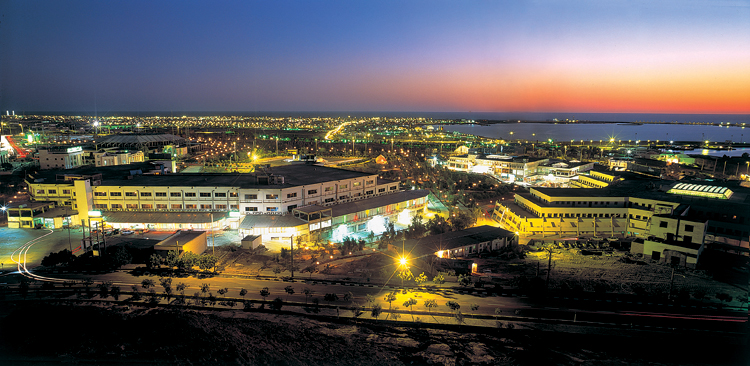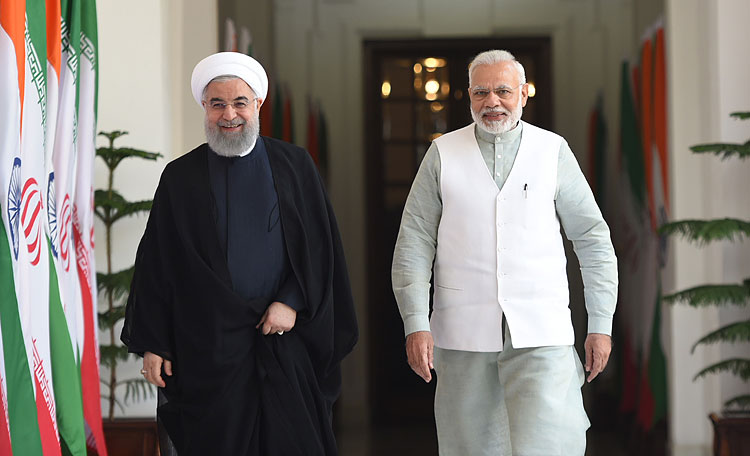INDIAN ARMED FORCES CHIEFS ON OUR RELENTLESS AND FOCUSED PUBLISHING EFFORTS

The insightful articles, inspiring narrations and analytical perspectives presented by the Editorial Team, establish an alluring connect with the reader. My compliments and best wishes to SP Guide Publications.

"Over the past 60 years, the growth of SP Guide Publications has mirrored the rising stature of Indian Navy. Its well-researched and informative magazines on Defence and Aerospace sector have served to shape an educated opinion of our military personnel, policy makers and the public alike. I wish SP's Publication team continued success, fair winds and following seas in all future endeavour!"

Since, its inception in 1964, SP Guide Publications has consistently demonstrated commitment to high-quality journalism in the aerospace and defence sectors, earning a well-deserved reputation as Asia's largest media house in this domain. I wish SP Guide Publications continued success in its pursuit of excellence.
- MoD initiates comprehensive review of Defence Acquisition Procedure 2020, pushes for defence reforms
- G7: The Swansong
- Kalinga Connect: South Asia to Polynesia
- Advanced MRSAM for India for a greater firepower
- Must Credit DRDO for Operation Sindoor, now what is next for defence R&D?
- Operation Sindoor | Day 2 DGMOs Briefing
- Operation Sindoor: Resolute yet Restrained
Chinese Specter on India-Iran Relations
 |
The Author is Former Director General of Information Systems and A Special Forces Veteran, Indian Army |

According to media reports, Iran has decided to exclude India from the 628 km railroad project that links its port in Chabahar to Zahedan on the Afghanistan border, citing delays by the Indian government in funding and starting the project, and has announced that Iran has decided to construct the railway line on its own. The announcement came soon after the Iranian Cabinet in June 2020 approved the mutual Iran-China partnership proposed by President Xi Jinping when visiting Iran in 2016. Under this partnership, China will invest $400 billion in Iran over 25 years, which will expand Chinese presence in Iran’s banking, telecommunications, ports, railways and dozens of other projects. Significantly, the partnership will include Chinese involvement in Chabahar’s duty free zone, an oil refinery nearby, and possibly a larger role in Chabahar port as well. In exchange, China would receive regular supply of Iranian oil at a discount for the next 25 years.
India has responded by saying it is committed to the rail project but admitted that progress has been slow due to “current political environment". Under an India-Iran agreement in 2003, India was to construct the Chabahar Port but this was inordinately delayed because of US-Iran friction and fear of sanctions. Chabahar is important for India’s trade with landlocked Afghanistan and Central Asia. Chabahar also complements the 215-km Zaranj-Delaram highway built by India in Afghanistan. The Chabahar-Zahedan railroad is a crucial component of this regional transportation network as it cuts down travel time from the Chabahar port to the Iran-Afghanistan border. Chabahar is also to be connected with the proposed International North-South Transport Corridor (INSTC) linking Mumbai to Moscow by sea and land, making it a cost-effective trade route for India to Europe, Russia and Central Asia. In 2016, Prime Minister Modi visited Iran and the Iran-India-Afghanistan Trilateral Agreement on Establishment of International Transport and Transit Corridor was signed. Under this agreement, New Delhi committed $500 million towards developing Chabahar port as well as the land-based route connecting the port to Afghanistan. In early 2016, work on the Chabahar port project began in earnest and the port began handling shipments by October 2017. Iran Railway commenced laying the track for the 628 km Chabahar-Zahedan rail line which is to be extended to Zaranj in Afghanistan on July 7, 2020 with 150 km section to be completed by March 2021 and full length of the track is expected to be completed by March 2022. This looks rather ambitious – 628 km of rail line in 21 months @30 km per month.

But India needs to move fast least China offers to complete it at faster rate. If India is excluded from the Chabahar-Zahedan rail project, it would serve China’s interest in isolating and undermining India’s regional interests. Given the deterioration in China-India relations, China would be willing to commit resources to diminish the strategic advantages India has gained by investing in the Chabahar port. Based on available reports in the public domain, it would appear that the Indian commitments to its regional connectivity is once again going to be determined by the state of US sanctions regime vis-a-vis Iran. But India cannot absolve itself of the blame for giving the commitment in 2016 for the rail project and not doing anything in the past four years. India also stopped 100 percent oil imports from Iran for fear of US sanctions. But despite our partnership with the US, America continues to threaten us with CAASTA for the S-400 deal with Russia and may do similarly for the recent deal for importing 12 x Sukhoi and 21 x MiG-29 fighters from Russia. China of course continued to import oil from Iran despite US sanctions. India could have continued oil imports from Iran at reduced levels considering the proximity and keeping the bilateral relationship balanced.

Iran recently announced it will establish a base in the Indian Ocean though the location has not been revealed. It is logical that this port will be developed by China and will have access to Chinese warships and submarines. The need of the hour is for India to act fast and join Iran in the Chabahar-Zahedan railway project immediately. The proposed Chabahar-Zahedan railroad is an extension of the Chabahar port project, completed in 2017 with India’s assistance. Located in a free trade zone, India has played a prominent role in the operation of the Chabahar port since its inception. If India’s involvement in the rail project that would link the Chabahar port to regional land routes were to diminish, it would be a strategic setback for India. If India truly considers these regional connectivity projects to be vital to its national interest, it cannot remain hostage to the vagaries of US foreign policy. Hopefully the policy makers will not continue to sit on the fence.





